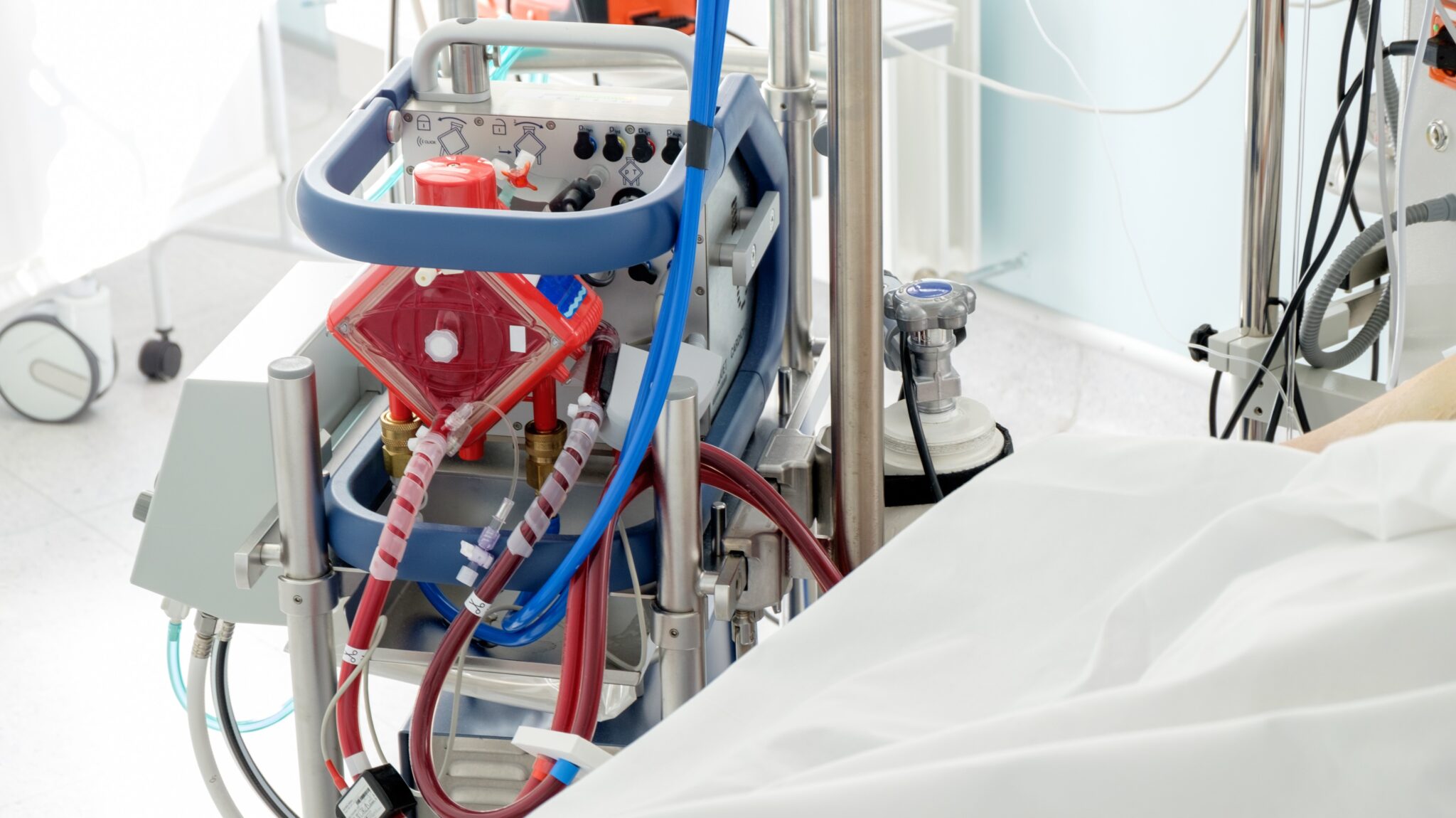Creative Strategies Used to Save COVID Patient Who Needed 149 Days of Extracorporeal Membrane Oxygenation

Infection with COVID-19 can take many forms. It can be mild enough to be mistaken for the common cold, or it can be a life-threatening illness that attacks the lungs and causes acute respiratory distress syndrome (ARDS).
In a report recently published in The Texas Heart Institute Journal, Orlando Suero, MD, and Subhasis Chatterjee, MD, along with their colleagues at The Texas Heart Institute and Baylor College of Medicine, describe a particularly severe case of COVID that led to life-threatening ARDS in a 36-year-old man. After he presented for treatment with classic symptoms of severe COVID—fever, loss of his sense of smell, and an abnormally low blood oxygen level—an echocardiogram showed that he also had depressed heart function. An intra-aortic balloon pump was placed through his right femoral artery to assist his heart, and he was put on extracorporeal membrane oxygenation (ECMO). The ECMO inflow and outflow cannulas were placed in the left femoral vein and left subclavian vein, which is a standard configuration.
After eight days of this support, the patient’s heart function recovered enough for the balloon pump to be removed. But even with ECMO, his blood oxygen level remained inadequate. So on day 10, his physicians added a second ECMO circuit, placing cannulas in the right femoral vein and the right axillary vein. This raised the patient’s blood oxygen to a satisfactory level.
“ECMO is considered long-term if it continues for more than 14 days for respiratory failure,” says Dr. Chatterjee, the ECMO director at Baylor St. Luke’s Medical Center in Houston. “Right when the patient crossed that 14-day mark, he started having bradycardia and asystole, which took five days to get under control with medications. Almost immediately after that, innovative clinicians such as Dr. Suero changed out his sedative drugs because the one he was receiving was making his triglyceride levels too high.”
On day 17, the patient’s ECMO setup was simplified to a single circuit with a left femoral inflow and left and right subclavian outflow. This was done to reduce recirculation: the movement of already oxygenated blood back into the ECMO circuit instead of through the body where it is needed. Then, on day 47, the circuit was changed out because of blood clots in the oxygenator and anemia resulting from hemolysis. On day 115, the subclavian and femoral cannulas were exchanged for a single cannula with two lumens, which was placed in the left subclavian vein.
Because the patient’s condition was steadily improving, between days 91 and 103 the patient was gradually weaned off intravenous sedatives. On day 138, the patient began trial periods without ECMO, breathing instead through a tracheostomy tube. Finally, on day 149, ECMO was discontinued altogether.
“This is the longest reported duration of ECMO support in any COVID survivor who did not have a lung transplant,” Dr. Chatterjee says. “There were times when there were no meaningful signs of improvement, and we talked with the patient’s family about considering withdrawing support. But they wanted to continue care as long as the patient didn’t have an irreversible complication, which he fortunately did not. We think this case illustrates the importance of keeping up ECMO support in young patients without any other failing organs, either until their lungs recover or until they have a lung transplant.”
“Perhaps the greatest satisfaction,” observes Dr. Suero, “came when the patient and his wife returned back to the ICU to show how well he was doing and express his thanks. That’s the really unique aspect that we captured in this report.”
Read Report
Suero OR, Valluri SK, Farias-Kovac MH, Simpson L, Loor G, Guerra DM, Diaz-Gomez JL, Chatterjee S. Recovery of lung function after 149 days on extracorporeal membrane oxygenation for COVID-19. Tex Heart Inst J. 2023;50(5):e238132. doi: 10.14503/THIJ-23-8132.
News Story By Stephen N. Palmer, PhD, ELS




